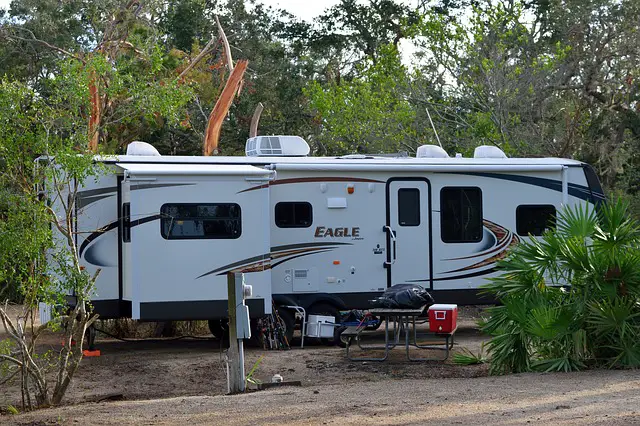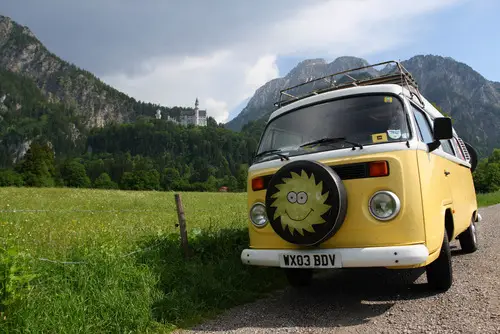Tips for Renting & Travelling in a Campervan
Ecotourism has become one of the top traveling trends lately, with many travelers choosing to escape to pristine natural landscapes such as Iceland, Patagonia, and New Zealand. While many ecotourism destinations offer the chance to experience exotic wildlife up close and personal in the wild and plenty of outdoor adventures, they are often lacking when it comes to accommodation choices.
To truly experience the many natural treasures of a destination, you need to travel outside the city centers and that often means losing access to hotels and restaurants. While you may find a few eco-lodges or glamping options available, these have become quite expensive experiences much like guided safaris or tours.
One of the cheapest and easiest ways to enjoy an ecotourism holiday is to rent a campervan and create your own epic road journey. Having a campervan gives you the freedom and flexibility to move around a destination while always being assured of accommodation and cooking facilities. Whether you’re hiring a camper in NZ, the Australian Outback, or a campervan rental in Iceland, there are a few things to consider when renting one.
Before setting off on any campervan road trip, make sure you are well-prepared for mechanical issues you may face along the way (and of course you’ll need motorhome insurance). Carrying jumper cables, a flashlight, duct tape, vice grips and a screwdriver set are an absolute must. If you want to have a well-rounded kit, add in some roadside flares, a high-lift jack that is rated to lift up the camper, and a cordless impact wrench to make flat tire changes a breeze. Tool Tally can help you create the perfect campervan tool kit.
In addition to preparing for breakdowns and general maintenance of your campervan, check out these additional helpful tips in order to enjoy a memorable ecotourism adventure on the road.



Picking the Right Campervan
There are several options when it comes to renting a campervan. You have larger motorhomes, low top campervans, high top campervans, and 4WD campers. You of course want to select a campervan that caters to the number of travelers you have, keeping in mind that most campervans contain a maximum of four sleeping berths. If you are travelling in a larger group, you should look into renting a motorhome. Because your campervan is your transport and accommodation, you will need to make sure there are enough seats by day and beds by night. You want to select a campervan that you feel comfortable to drive and make sure you pay attention to the transmission. You don’t want to end up with a manual if you dread managing a stick shift.

Choosing a Destination & Planning Your Route.
While any destination can offer incredible campervan road trips, there are obviously certain destinations that are simply made for campervans. Places like New Zealand offer incredible natural features that can only be reached by heading deep into the rugged wilderness. It is this type of a destination where it really pays to have a campervan so you can maximize your time in the best areas of a country, which are often the most remote.
While you may have the freedom to move around anywhere, you still need to create an itinerary that provides you with legal campsite options. You may need to book sites well in advance during peak travel seasons and may wish to have a powered site and area that provides dump stations for your wastewater.


Picking up Your Campervan and Before You Hit the Road
When you’re given the keys to your rental campervan, it is essential that you do a thorough check to make sure that all the inclusions that are listed on your agreement are indeed present. Look for any damage inside and out and ask for a rundown on how everything works since you aren’t just renting a basic car. Inquire as to whether you need to return the campervan full of fuel and if you are required to do any cleaning of the vehicle.
Be sure to stock up on anything you may need while in the city such as groceries and toiletries as they may become scarce outside of town. Be aware of where service stations are so you aren’t left out on the road with an empty tank and always do a quick check of fluids and tires at each stop.
Should anything go wrong with the campervan during your travels, notify the rental company first. Electrical and mechanical issues may be covered for free whereas flat tires or dead batteries may be charged. Also give the rental company a heads up if you won’t be able to return the campervan at the agreed time. They can often extend your rental agreement but you may be charged hefty fines for not notifying them.


Check the Inclusions
Depending on your rental company, you may not have to bring much along with you except for clothing and food. Many campervans come with linen and bedding, kitchen utensils, tables, and chairs. You may, however, need to inquire about things like child seats and navigation systems if you require them. Of course the more bells and whistles your campervan offers, the more you can expect to pay.
Of course insurance is never an inclusion, so you’ll have to make sure this is sorted out before your trip begins. We suggest that you review and compare when choosing a medical insurance plan so you can gain an idea of the best deals out there. This is such an important aspect for protecting yourself against the financial burdens of medical emergencies or accidents that may occur on the road.
Campervan Rental Restrictions
Rental restrictions will vary from country to country. There is often a minimum age requirement, often 21, and there may be a surcharge for drivers under the age of 25. Most destinations will not require you to have a special license, however, you will have to have a valid full non-provisional drivers license. Certain countries may require you to have an International Driving Permit or one at least translated to English if it is not.
Also keep in mind that unlike car rentals, hiring a campervan usually requires a minimum hire period. This means it may be difficult to simply rent a campervan for a single day or weekend trip. Check to see if you are allowed unlimited mileage and be aware of what types of roads you are allowed to take the campervan on.

Driving a Campervan
It goes without saying that driving a campervan is a bit different than driving a regular car. Braking distance and acceleration in a campervan takes longer and larger vans are more susceptible to strong winds. It is also important to remember that you may have to pay attention to height restrictions since many campervans are considerably taller than cars. When driving, make sure to secure all your belongings such as cooking utensils so they do not pose a safety risk.
You can download the Campermate App to search for campsites, toilets, and waste stations. You’ll also find tips from fellow campervan travelers and where you can gain access to WiFi.






















September 26, 2018
Hello
Thank you very much for writing this interesting article about travelling in a Campervan.
I have never actually been in a campervan or motorhome, but you sure make it sound like a nice intimate way to spend time with nature!
I have never travelled abroad to interesting places like Europe and Australia, but even here in the United States, I would love to try this.
Thank you very much for the great read!
Mike
October 16, 2018
Hi, Thanks for the sharing such an informative article about traveling in a Campervan. We are going on a trip very soon. So, this one is helpful for us. Already bookmark this site for future reference.
February 28, 2019
Nice to see this post. Great experience.